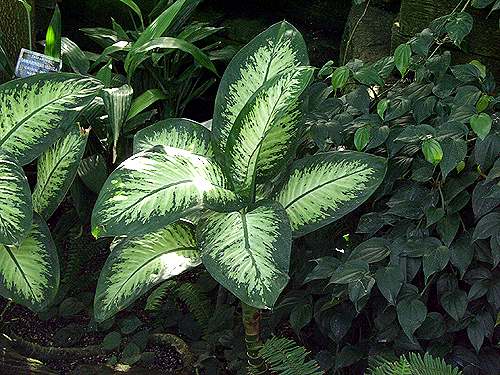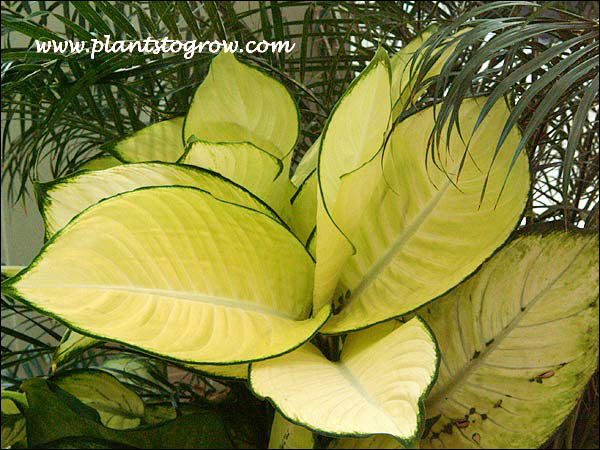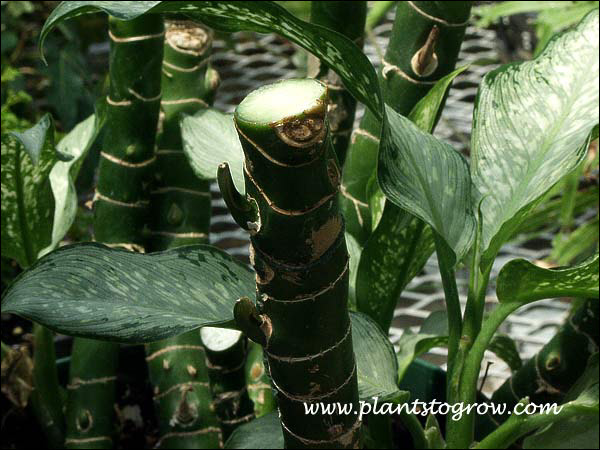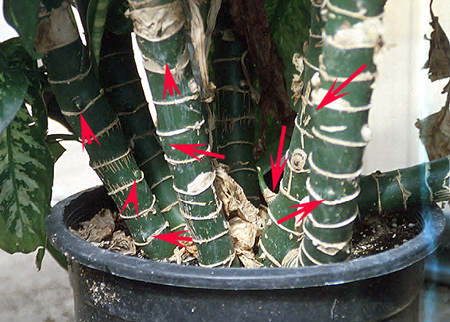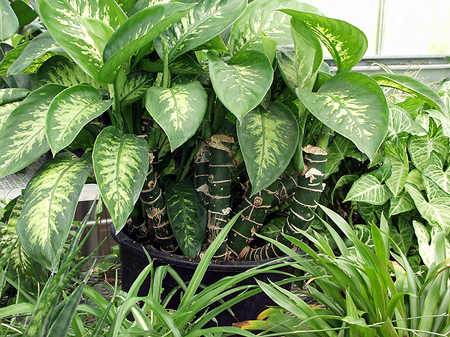| Description | Dumbcane ABC's (Dieffenbachia) For some people this plant grows like a weed, for others, they have trouble keeping it alive. Overall a relatively easy plant to grow. It is a poisonous plant. |
|---|---|
| Pronunciation | (deef-en-BACH-ee-uh) |
| Plant Type | Indoor Foliage, Site author's observations, Tropical herbaceous plants |
| Hardiness Zone | Tropical |
| Sunlight | bright to moderate, tolerates low, never direct, at least 400 footcandles |
| Moisture | average, evenly moist, slightly dry |
| Growing Media | average house |
| Temperature | prefers warm 70-80 degrees, tolerates average house |
| Flowers | spathes, not ornamental |
| Leaves | leaves come in many colors depending on the cultivar, colors such as; green, green white coloration, yellow, cream, etc. |
| Stems | thick cane-like stem |
| Dimensions | 2-3 feet up to 6-8' |
| Maintenance | With time the plant will lose the bottom leaves and the plant should be cut back. The plant will easily resprout leaves on the stem from the existing buds. Be aware that the sap is toxic and can burn the skin, so gloves are recommended when cutting back large stems. |
| Propagation | It can be rooted from tip cuttings, air-layered or cane cuttings (Stem section). A friend of mine (who was one of the people that this plant grew like a weed) gave me 3, four foot stems from a large plant he cut back. I proceeded to cut the stems into to 6" sections to root. This was the first time I cut back Dieffenbachia and it was the first and last time I handled cuttings without gloves. The sap caused major irritation to my skin. The sections can be either laid flat, or stuck into the rooting media. They will form roots and new stems. |
| Cultivar Origin | Dieffenbachia was named by Heinrich Wilhelm Schott, the Director of the Botanical Gardens in Vienna, to honor his head gardener Joseph Dieffenbach (1796–1863). |
| Misc Facts | Like all Dieffenbachia, they are not a plant for homes with curious pets and small children because of the toxic leaves. These plants contain needle-like crystals of calcium oxalate that penetrate and irritate the mouth and throat tissues. Chemicals in the sap can also cause inflammation of mucous membranes. Plants in this family include dieffenbachia, philodendron, caladium, and elephant's ear. Symptoms of poisoning from dieffenbachia are intense burning and irritation of the mouth, tongue, and lips. Although rare, the swelling can seal off the breathing passages if the reaction is severe enough. When ingested, philodendron, Caladium, and Elephant's Ear produce the same symptoms. If a piece of the corm (underground stem) is eaten, symptoms are burning in the mouth and throat. Jack-in-the-pulpit is a native member to watch in this family. (www.plantkingdom.com) |
| Notes & Reference | #158-Plantepedia (Maggie Stuckey) |

Cart
